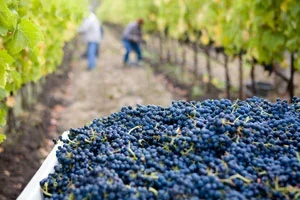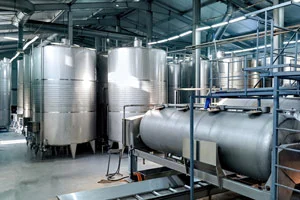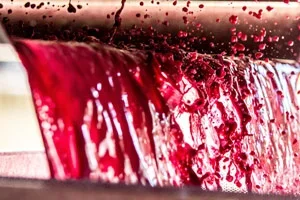Uncorking a bottle of wine and getting the unpleasant surprise that it is spoiled is a big problem faced by wine producers. If it is identified with the brand, the image will be very negative and hard to erase. Restoring customer confidence can be a challenging task. This is why we must plan ahead and do everything we can to avoid these 5 wine flaws before it is too late.
What are the 5 most common wine flaws?
Various problems can occur during wine production to affect the wine’s quality and even spoil it altogether. Some are imperceptible during processing and become apparent later, after having spent time in the bottle. What’s more, the wine may start out good and then undergo an alteration when bottled.
Here are the 5 most common wine flaws and how they can be avoided.
1. Wine oxidation
Oxidation is one of the ways a good wine is spoiled. It is caused by the presence of oxygen, due to its dissolution during storage, at the time of bottling, or by a problem later with the cork.
Oxygen entering through the closure is inevitable, but it may be greater or less depending on the type of closure and storage conditions. This is why it is so important to take action at the time of bottling to reduce the oxygen content. When the bottle’s cork dries out, whether by being stored upright or in a location that is too dry, it cracks and allows air to enter. This produces irreparable oxidation. Other causes may be pressure and temperature changes that can contract, dilate, or move the cork.
When you open a bottle containing oxidized wine, you will notice a rancid smell. The color is also affected, becoming brown (in the case of red wine) or yellow (in the case of white wine). The taste will be bitter, dry, and nutty.
Oxi_Out is Agrovin’s solution to combat this problem. This piece of equipment controls dissolved gases, including the oxygen and carbon dioxide content dissolved in wines at any stage of the production process.
2. Wine reduction
Another flaw that can be found when uncorking a bottle of wine is reduction. This defect is created by the chemical compound hydrogen sulfide and its derivatives. It creates the opposite effect of oxidation, since it occurs when the wine has been produced under excessively reductive conditions. Although this is the most common cause, reduction may also be due to excess sulfur dioxide or easily assimilated nitrogen deficiency during fermentation.
We encounter this flaw when, after removing the cork, we find the wine to be dull with hardly any aromatic intensity. In the most serious cases, the wine may smell like burned rubber or even rotten eggs. Aerating wine through decantation or bubbling systems can reduce this problem. Still, it is best to avoid them from the outset.
Inactive yeasts enriched in amino acids are the organic nitrogen resource used to correct nutritional deficiencies in musts and enrich them with organic nitrogen. Its use replaces ammonium salts (sulfate and phosphate), which, when inappropriately applied, can lead to sensory and kinetic problems.
Agrovin also uses Actimax NATURA, a nutrient used in alcoholic fermentation, based on the nitrogen content of the grapes, almost exclusively to increase available amino acids, particularly arginine.
3. Tartaric precipitation
Tartaric precipitation is easily detected, as it occurs when small, clear, sugar-like crystals appear at the bottom of a bottle. They can also accumulate on the cork, depending on how the bottle is stored.
Tartaric acid is a naturally occurring component in grapes that, if not properly treated during fermentation, causes what is known as tartaric precipitation. These crystals are not harmful to the wine or to the consumer, but they are unpleasant and should be avoided as much as possible.
For this, Agrovin offers several products, such as Estabicel, a purified, plant-derived cellulose gum selected for its degree of substitution, its degree of polymerization, and its low viscosity; Metavimon, a product that has the property of inhibiting the crystallization of potassium bitartrate; and the FreeK+ system, for effectively reducing selective resins of potassium.
4. Brett
The Brettanomyces bruxellensis fungus causes this imperfection. The presence of this yeast in wine is the cause of one of the biggest problems faced by winemakers. Its presence creates what is known as the “Brett note,” which creates an animal, leather, or horse aroma.
The development of this yeast begins after alcoholic fermentation. The low sulfur content intended to permit malolactic fermentation, along with the lack of competition, allows an increase in the population without the need for a large number of starting cells.
The characteristics of Brettanomyces bruxellensis allow it to grow under wine conditions, as it is resistant to ethanol and low levels of sulfur. Although it grows slowly, long aging periods make it possible to reach sufficient populations capable of generating ethyl phenols and other compounds that will ultimately affect the sensory quality of the wine, in terms of both the aroma and the color stability.
At Agrovin, we have a key product designed to help eliminate Brettanomyces bruxellensis yeast in wine. Applying Microstab Protect in a microbiologically contaminated wine will reduce the existing population, with the dose adjusted in accordance with to the starting population. It also preventively helps to maintain the correct levels of free sulfur dioxide thanks to its reduced glutathione content.
5. Volatile acidity
Another problem that can occur during wine production is sour or vinegar-like wine. This is the result of a type of bacteria, Acetobacter, which attacks the product due to the lack of sulfur dioxide, excessive contact with oxygen, and low concentrations of alcohol.
These bacteria usually grow in wines when free sulfur dioxide is low and there is an increase in oxygen in the bottle. Its growth also depends on the initial population of bacteria at the time of bottling.
To combat this problem, we offer BECO Membran filter cartridges, which are specially designed to meet microbiological safety requirements and provide long-term durability in the final filtration of wine. These filter cartridges perfectly combine long-term durability with the maintenance of valued taste and color in wines.









